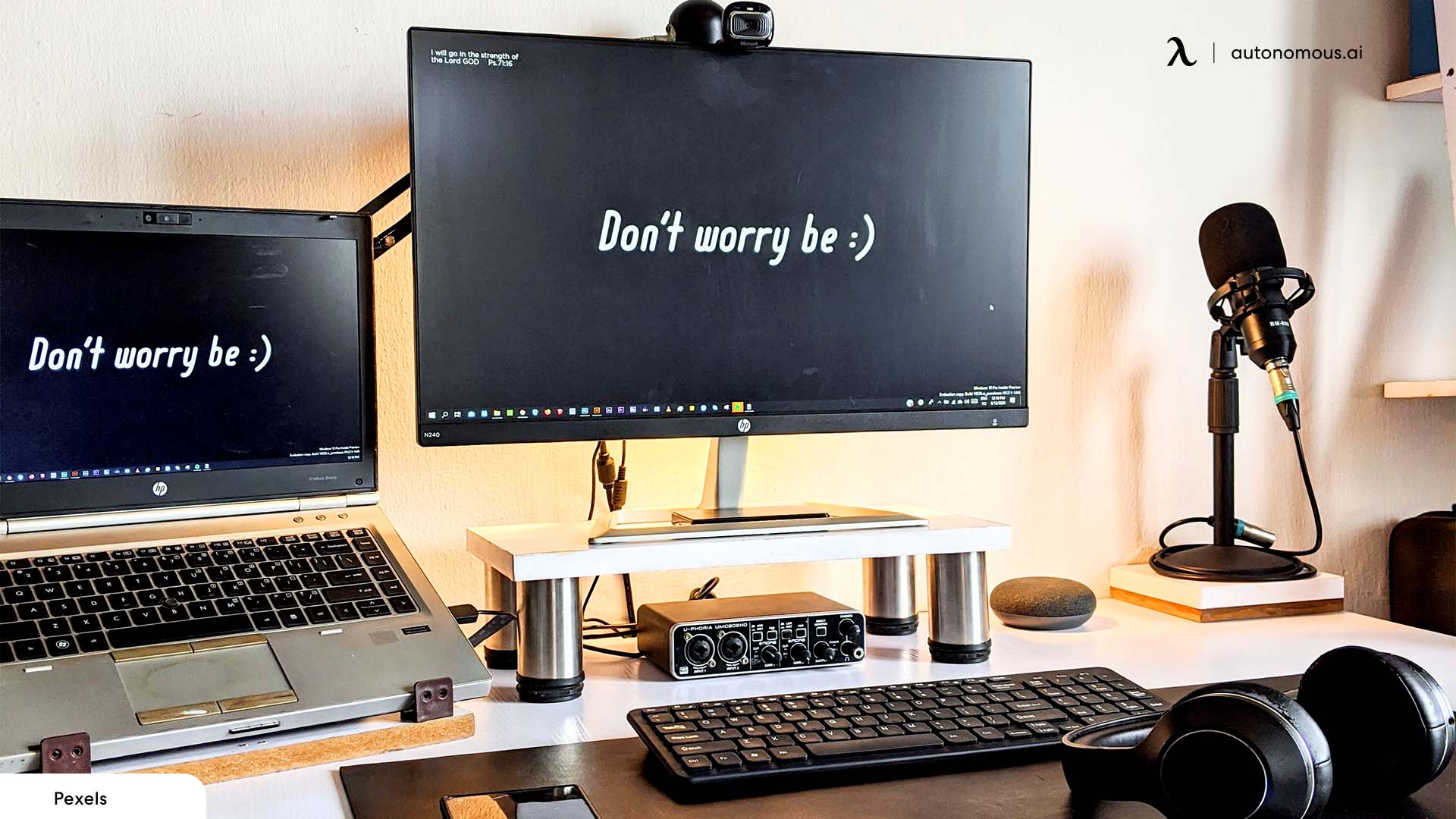
How to Choose the Right Desk Extender for Your Needs
Table of Contents
Selecting the perfect desk extender can transform your workspace, boost your comfort, and improve your productivity. Whether you need a little extra surface for a second monitor, a slide‑out shelf for your keyboard, or an adjustable platform for alternating between sitting and standing, there’s a computer desk extension solution designed just for you. In this guide, we’ll cover everything from understanding what a desk extender is, to comparing popular styles, to the key factors you should weigh before making a purchase. By the end, you’ll feel confident choosing the ideal office desk extension that fits your workflow, equipment, and budget.
Understanding Desk Extenders
A desk extender (or computer desk extension) is an auxiliary platform or attachment that expands the usable surface area of an existing desk. Instead of replacing the entire desk, extenders provide a versatile add‑on for equipment such as secondary monitors, keyboards, laptops, or drafting materials. Key characteristics include:
- Mounting Methods: Many extenders affix to the desk’s edge with clamps or clips. Others rest on top of or beside the primary surface.
- Material Composition: Options span from MDF and engineered wood to tempered glass, aluminum, and high‑density plastics—choices that affect both aesthetics and load capacity.
- Degree of Adjustability: Some platforms are fixed; others enable height, tilt, or lateral adjustments for ergonomic optimization.
- Compatibility Requirements: Confirm that the extender fits the desk’s thickness (typically 0.4"–2") and edge profile (flat vs. beveled).
- Load Capacity: Weight ratings vary widely; heavy‑duty models can support multiple screens, while lightweight options cater to laptops or tablets.
By understanding these attributes, one can narrow down the options and select a model that installs easily, maintains stability under load, and complements the existing décor.
Its Benefits
Integrating a desk height extender into your workspace can significantly improve ergonomics and employee wellbeing. By enabling a customizable working height, a stand-up desk extender allows employees to switch between sitting and standing positions, reducing the risk of musculoskeletal disorders and enhancing overall comfort. Research has shown that standing periodically throughout the day can boost energy levels, improve posture, and reduce the likelihood of developing chronic health issues associated with prolonged sitting.
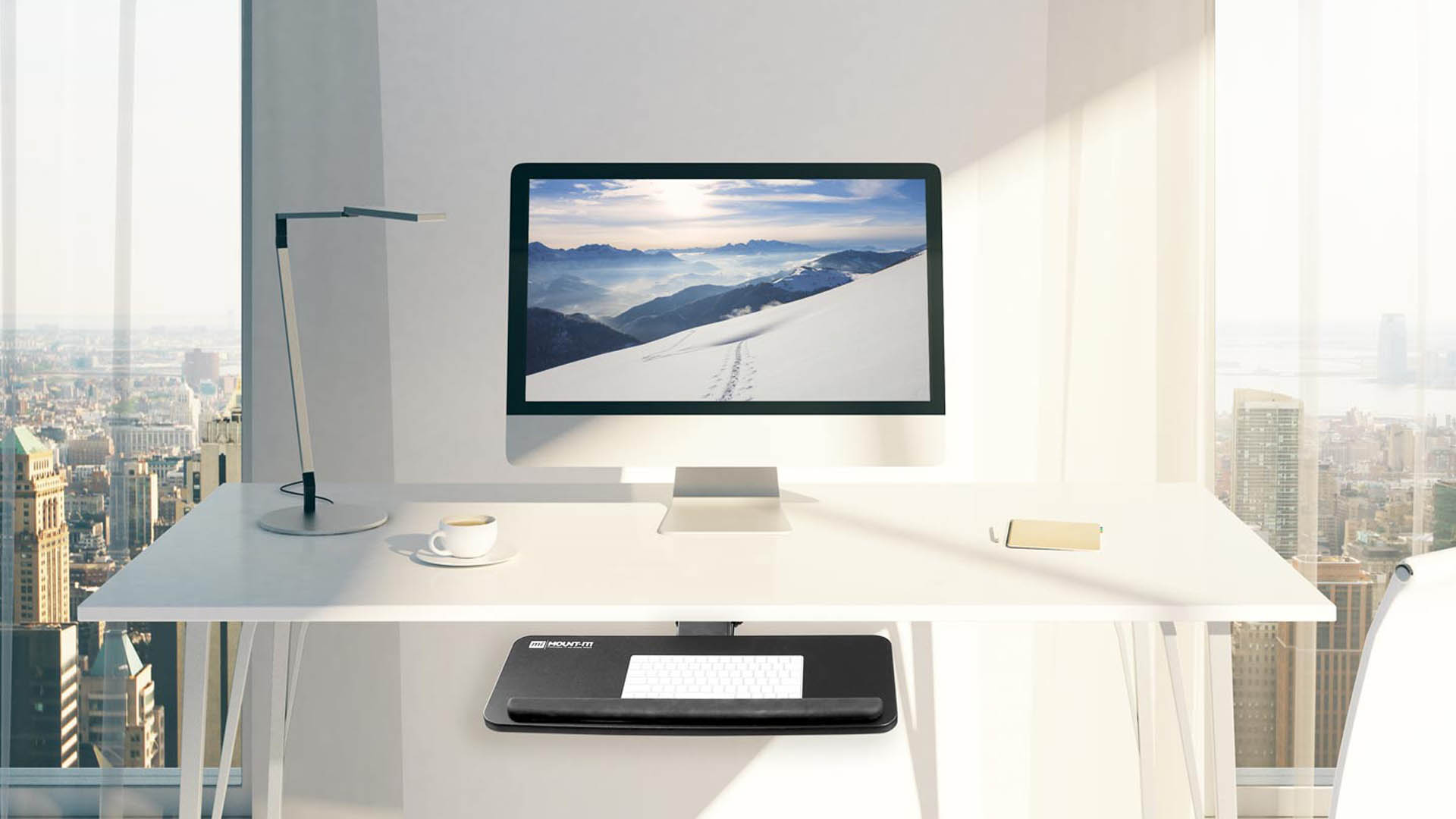
Types of Desk Extenders
Desk extenders come in diverse configurations to suit distinct use cases. Below are eight prevalent types, each with its unique advantages and ideal applications.
1. Clamp‑On Desk Extenders
Clamp‑on desk extenders attach securely to the front or side edge of a desk using adjustable clamps. Their benefits include:
- Enhanced Workspace: Provides a stable platform for a second monitor, printer, or documents.
- No Permanent Installation: Tightens by hand or with minimal tools—no drilling or adhesives required.
- High Load Capacity: Quality models support upwards of 50 lbs, ideal for heavy peripherals.
- Flexible Positioning: Many units feature swivel, slide, or rotation mechanisms, allowing customized placement.
This style strikes a balance between sturdiness and adaptability, making it a popular choice for both professional and home office setups.
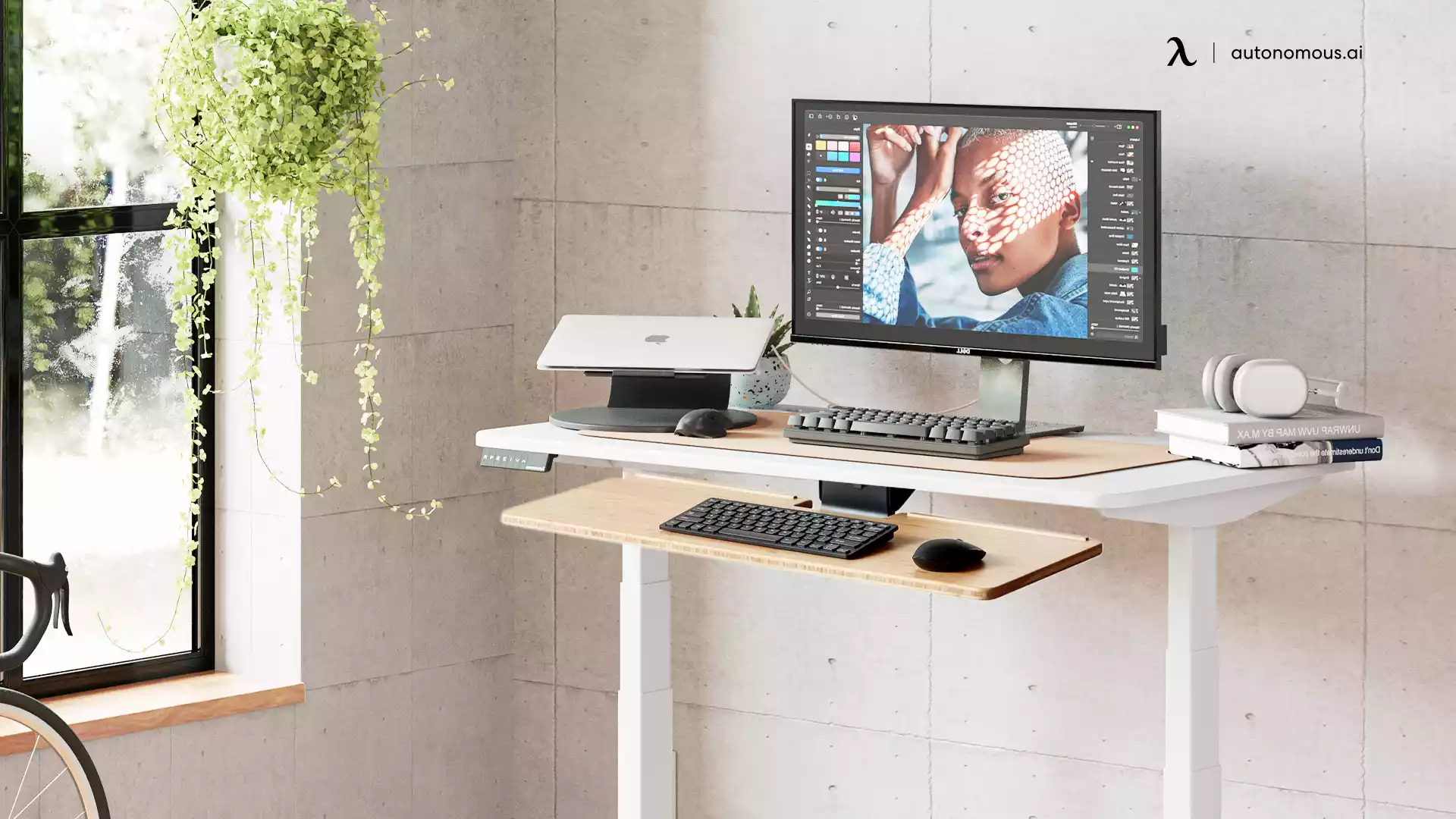
2. Clip‑On Desk Extenders
Clip‑on desk extenders utilize spring‑loaded clips instead of screw clamps, offering:
- Rapid Attachment/Removal: Ideal for shared or temporary workstations.
- Lightweight Design: Fits desks thinner than 1 inch; easily transported between locations.
- Lower Load Ratings: Typically supports 10–15 lbs—best suited for laptops, notebooks, or light office accessories.
- Sleek Profile: Minimal bulk under the desk makes it suitable for tight clearances.
These extenders cater to mobile professionals, students, or anyone requiring an easily removable desk extension.
3. Ergonomic Desk Extenders
Ergonomic desk extenders focus on health and comfort by offering height, angle, or swivel adjustments. Subcategories include:
- Tilt‑Adjustable Keyboard Trays: Enable neutral wrist positioning (−15° to +15° tilt) to reduce strain.
- Height‑Adjustable Platforms: Gas‑spring or crank‑driven mechanisms allow transitions between sitting and standing levels.
Key advantages:
- Posture Improvement: Allows optimal arm and wrist alignment during typing or mouse use.
- Standing Desk Integration: Seamlessly converts a portion of the workspace into a standing surface.
Ergonomic extenders are highly valued in preventing repetitive strain injuries and promoting dynamic working postures.
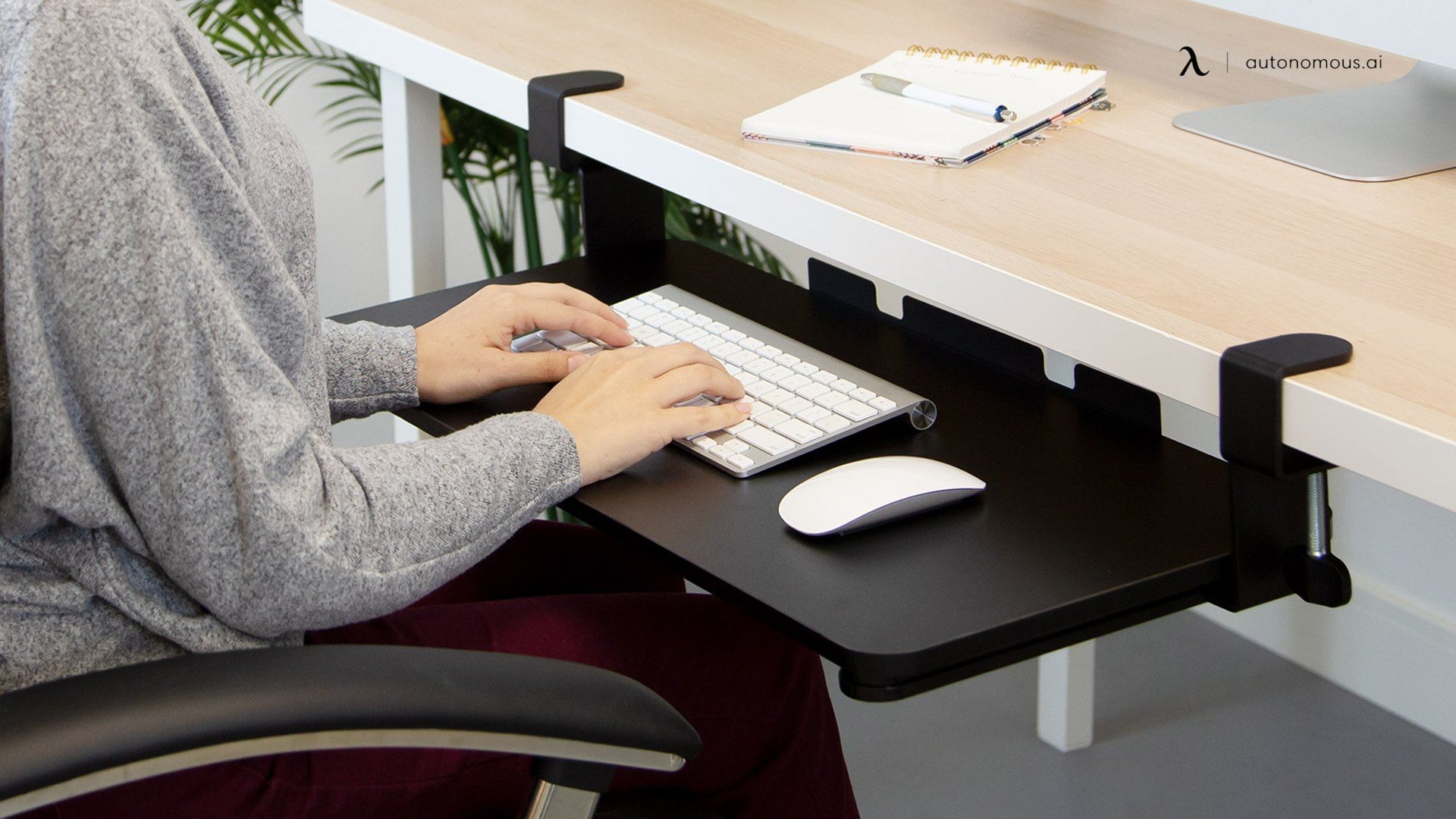
4. Foldable Desk Extenders
Foldable desk extenders collapse flat against the desk when not in use. Features often include:
- Hinged Deployment: Easily swings into position, then folds flush to the desk edge.
- Locking Mechanisms: Ensures rigidity during use and safety when stowed.
- Space Optimization: Perfect for multi‑purpose rooms where extra surface is only occasionally needed.
This design caters to compact living spaces, guest rooms, or areas requiring frequent reconfiguration.
5. Desk Extender for Standing
Desk extenders for standing transform a segment of a traditional desk into a standing workstation. Common elements:
- Gas‑Spring Lift Systems: Smooth height adjustments, typically ranging 12"–17" above the desk.
- Broad Platform: Sufficient surface for a laptop, monitor, or standing keyboard tray.
- Removability: Can be permanently installed or clipped on only when desired.
These solutions support active workstyles, encouraging regular shifts between seated and standing positions to enhance circulation and reduce fatigue.
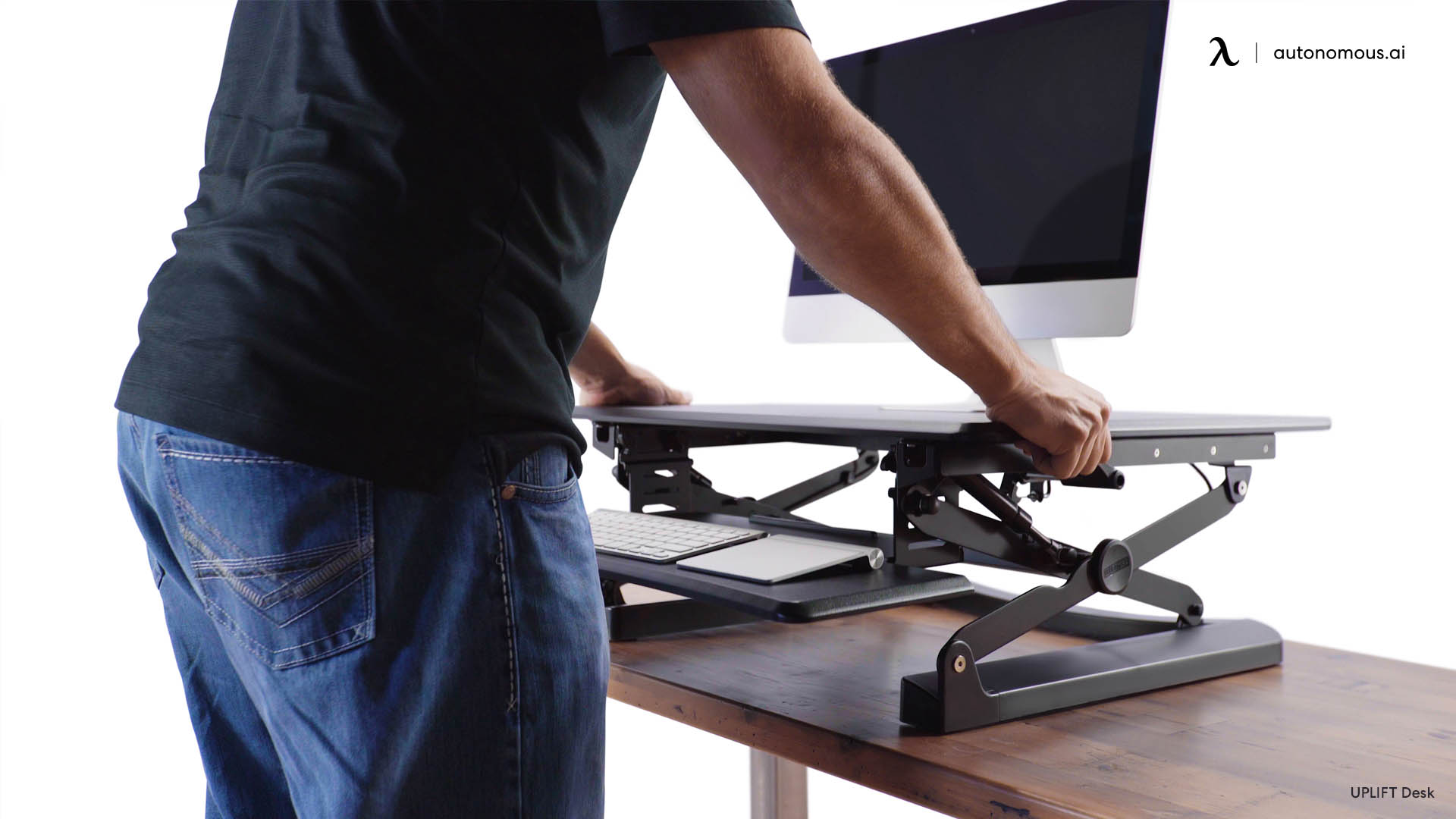
6. Side Desk Extenders
Side desk extenders attach to the lateral edge of a desk, offering:
- Peripheral Relocation: Moves printers, scanners, or reference materials off the main surface.
Workflow Efficiency: Keeps frequently accessed items within easy reach. - Specialized Attachments: Many include hooks, file slots, or headphone holders.
Ideal for users who require quick access to equipment without sacrificing primary work area.
7. Desk Extender for Laptop
Laptop desk extenders are streamlined platforms designed to raise a laptop to eye level. Advantages include:
- Neck and Neck Relief: Elevation reduces downward gaze, alleviating strain.
- Improved Ventilation: Better airflow under the laptop enhances cooling.
- Desk Clearance: Space beneath the platform can store a keyboard or other accessories.
These extenders optimize hybrid laptop‑desktop workflows and support proper monitor alignment.
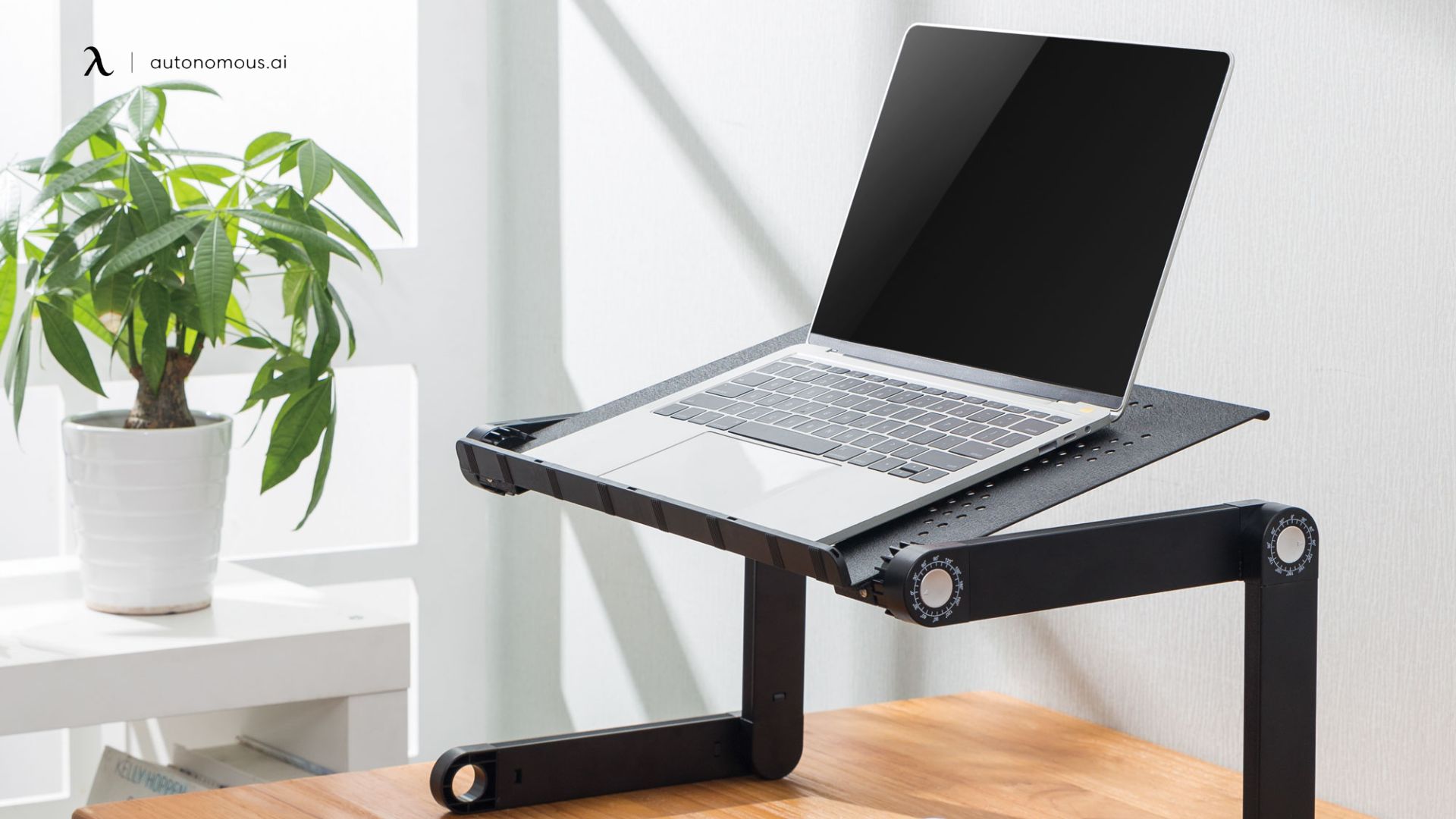
8. Desk Extender for Monitor
Monitor‑specific extenders or stands often mount above or beside the desk to support one or more displays. Key features:
- VESA Compatibility: Accommodates standard monitor mounts.
- Adjustable Articulation: Height, tilt, and swivel adjustments for ideal ergonomic alignment.
- Integrated Cable Management: Channels or clips conceal cords for a clean appearance.
Monitor extenders enhance multi‑monitor setups and ensure screens are positioned at comfortable viewing angles.
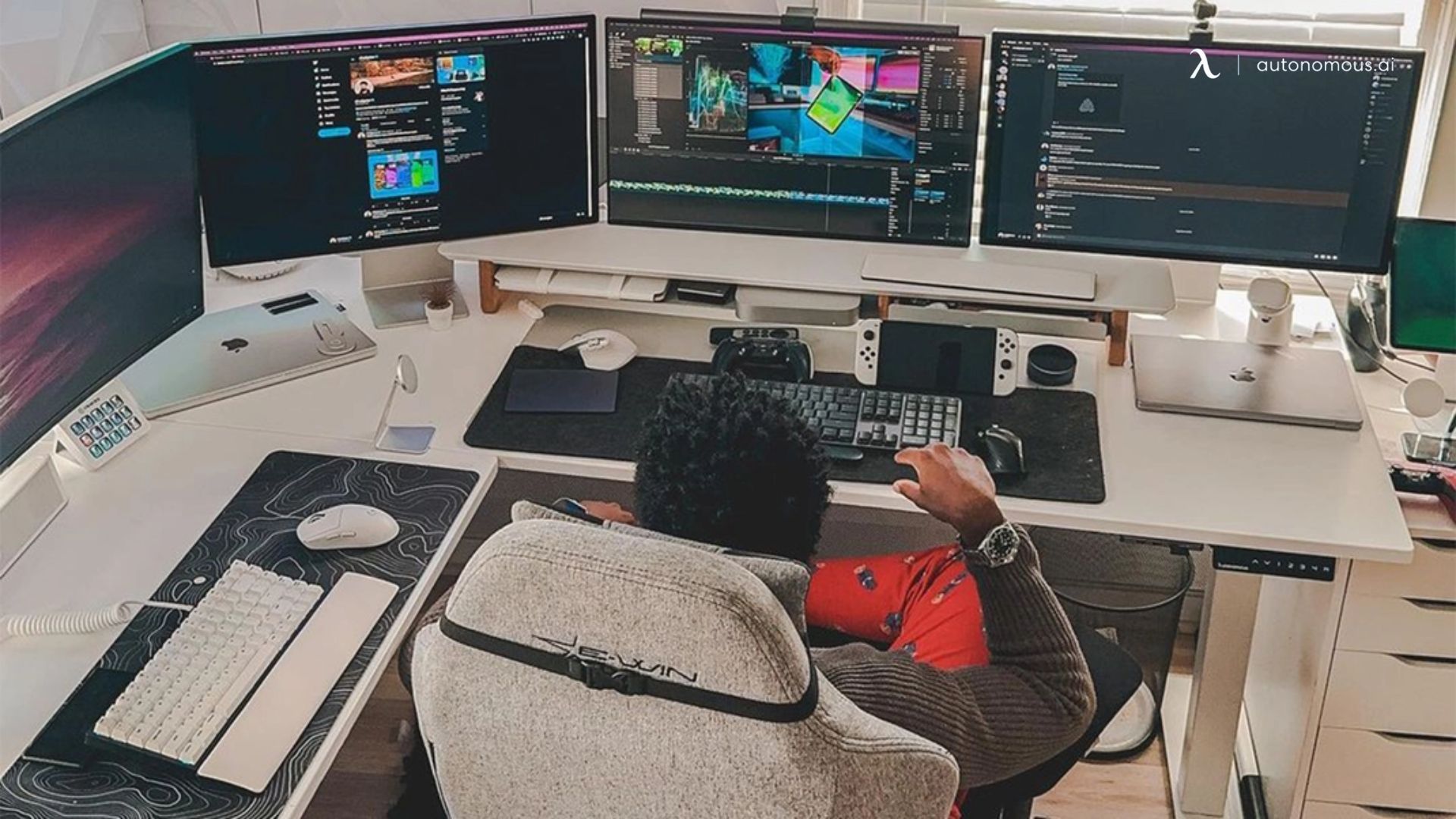
Clamp-On Desk Extender vs. Clamp-On Keyboard Tray
Choosing between a clamp-on desk extender and a clamp-on keyboard tray depends on your specific needs. Both options provide additional workspace, but they serve different purposes.
Clamp-On Desk Extender
Ideal for:
- Expanding overall desk surface
- Adding space for monitors, documents, and other accessories
Clamp-On Keyboard Tray
Ideal for:
- Ergonomically positioning your keyboard
- Freeing up desk space by moving the keyboard below the desk surface
| Feature | Clamp-On Desk Extender | Clamp-On Keyboard Tray |
|---|---|---|
| Use | Increases overall desk surface | Positions keyboard ergonomically |
| Installation | Easy to install and remove | Easy to install and remove |
| Space Utilization | Provides additional space for various items | Frees up desk surface by moving keyboard |
| Ergonomics | May not improve ergonomic setup | Significantly improves ergonomic posture |
Factors to Consider When Choosing a Desk Extender
Size and Compatibility
Ensure the computer desk extender you choose is compatible with your existing desk. Measure your desk’s dimensions and check the extender’s specifications to ensure a good fit. Consider the weight capacity of the extender to ensure it can support your equipment.
Purpose and Usage
Think about how you plan to use the desk extender. If you need extra space for a monitor, a computer desk extender with sturdy support is essential. For general workspace expansion, a desk extender tray might be sufficient.
Installation and Adjustability
Consider how easy the extender is to install and adjust. If you frequently change your workspace setup, a clamp-on desk extender might be the best option. For a permanent setup, an ergonomic desk extender with adjustable features can provide long-term benefits.
Material and Durability
Desk extenders are made from various materials, including wood, metal, and plastic. Choose a material that matches your desk and is durable enough to withstand regular use.
Budget
Desk extenders come in a range of prices. Determine your budget and look for options that offer the best value for your needs. While ergonomic and adjustable extenders may be more expensive, they can provide long-term health benefits.
If you’re considering a standing desk, explore options like the standing desk, corner standing desk, small standing desk, and standing desk with drawer.
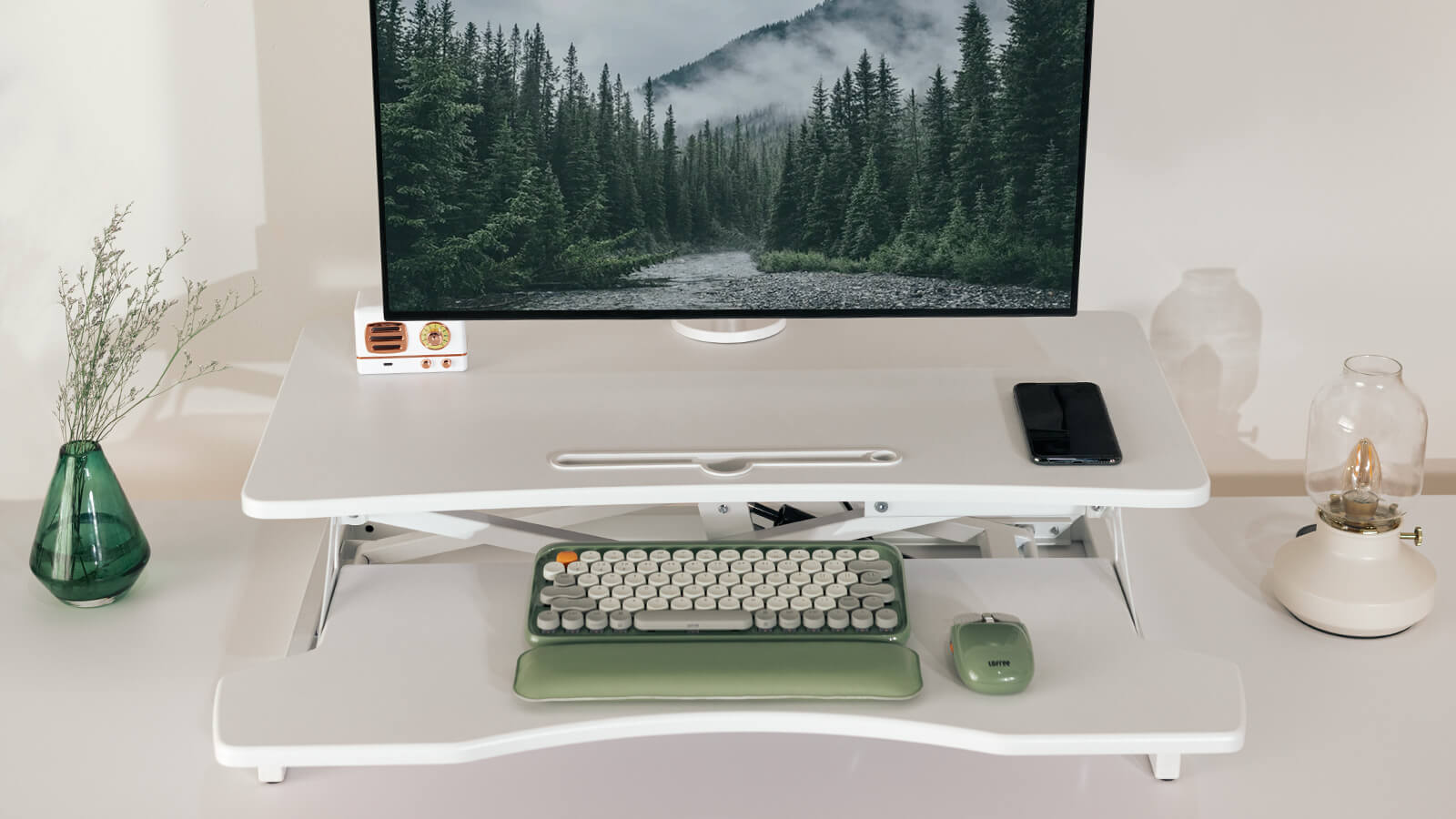
DIY Desk Extender Projects: Custom Solutions for Your Standing Desk
For those who enjoy hands-on projects, creating a DIY desk extender can be a rewarding experience. Using readily available materials, you can design a custom extender that perfectly fits your workspace and aesthetic preferences. Refer to these DIY standing desk ideas for inspiration and step-by-step instructions. Customizing your desk extender allows you to tailor it to your exact requirements, ensuring an ergonomic and personalized setup.
With a few tools and some creativity, you can design a custom desk extender for standing that fits perfectly with your existing setup and meets your specific needs. Here’s a guide to help you get started.
Materials You May Need
- Plywood or solid wood
- Adjustable legs or risers
- Screws and brackets
- Drill and screwdriver
- Sandpaper
- Paint or wood finish (optional)
Steps to Create Your DIY Desk Extender
1. Plan Your Design:
Measure your existing desk to determine the size of the extender.
Decide on the height you want to add to your desk.
Sketch a simple design, considering the placement of monitors, keyboard, and other accessories.
2. Gather Materials:
Choose a sturdy material for the desk surface, such as plywood or solid wood.
Select adjustable legs or risers to achieve the desired height.
3. Cut and Prepare the Wood:
Cut the wood to the size and shape of your design.
Sand the edges and surface to ensure a smooth finish.
If desired, paint or apply a wood finish to match your existing desk.
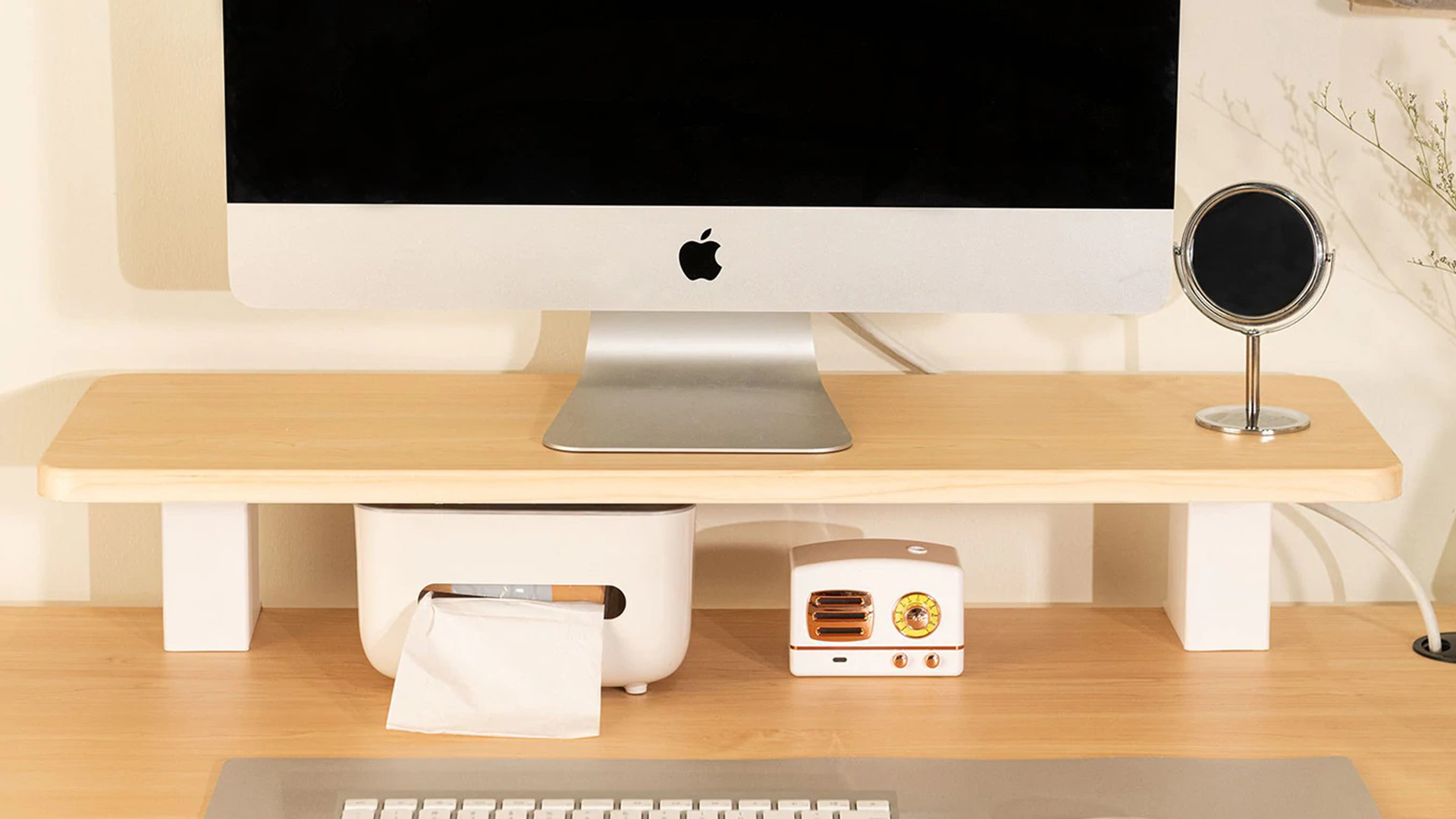
4. Attach the Legs or Risers:
Secure the adjustable legs or risers to the bottom of the wood surface using screws and brackets.
Ensure they are evenly spaced and securely attached for stability.
5. Assemble and Adjust:
Place the completed extender on your existing desk.
Adjust the height of the legs or risers to achieve the optimal ergonomic position.
Ensure the extender is stable and does not wobble.
6. Set Up Your Workspace:
Arrange your monitors, keyboard, and other accessories on the extender.
Adjust the placement to maintain an ergonomic setup, ensuring your monitor is at eye level and your keyboard and mouse are within comfortable reach.
Looking to enhance your workspace further? Check out our guide on the extendable computer desks for versatile options that can grow with your needs. If you're interested in a unique and practical addition, consider a slide-out desk extension to maximize your desk space efficiently. These resources provide great ideas and inspiration to create a more dynamic and functional workspace.
Conclusion
Choosing the right desk extender can significantly enhance your workspace, improving both productivity and comfort. By considering factors such as size, compatibility, purpose, installation, material, and budget, you can find the perfect office desk extender to meet your needs. Whether you opt for a clamp-on desk extender, a clip-on desk extender, or an ergonomic desk extender, investing in the right solution will help you create a more efficient and comfortable work environment
Stay connected with us!
Subscribe to our weekly updates to stay in the loop about our latest innovations and community news!
Interested in a Link Placement?
Spread the word
.svg)


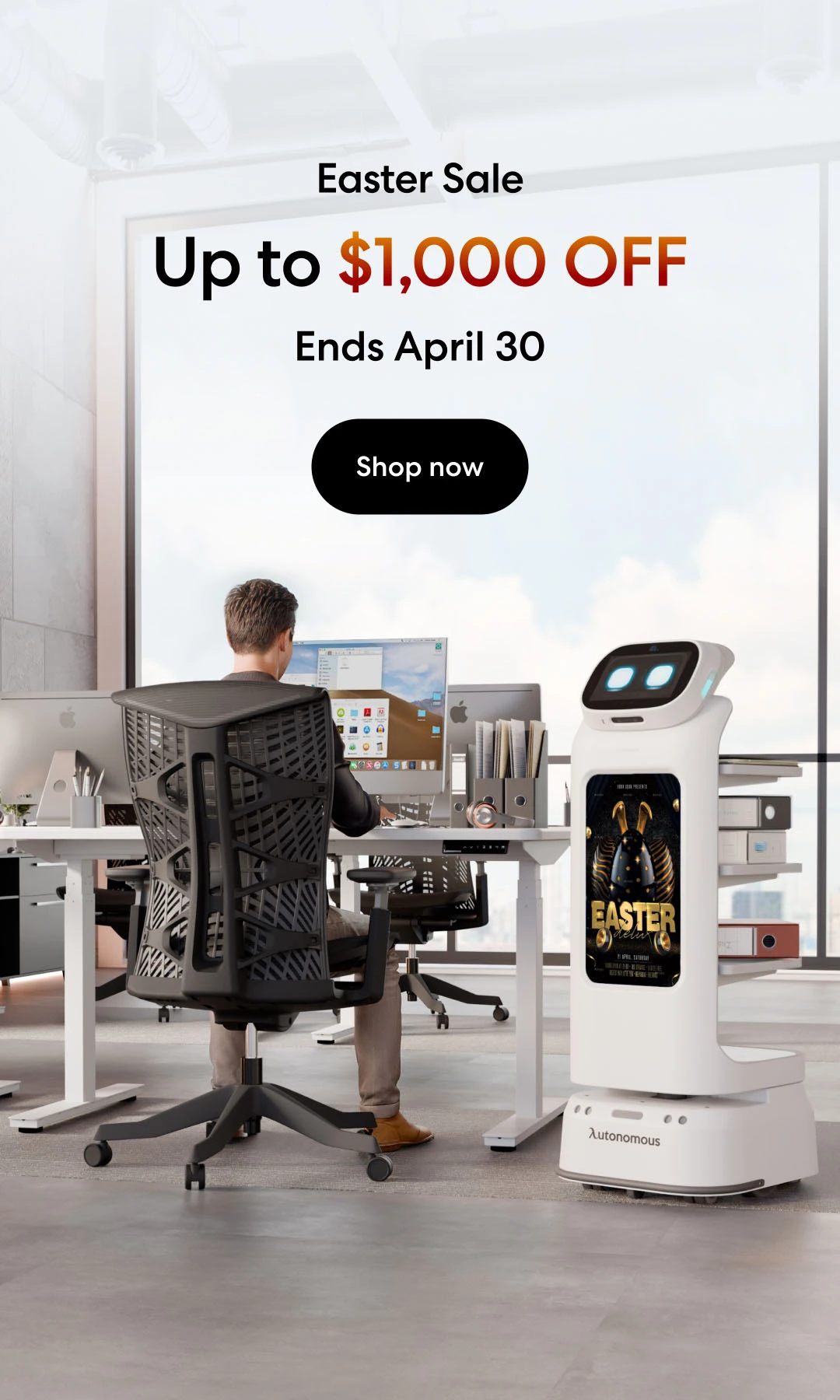
/https://storage.googleapis.com/s3-autonomous-upgrade-3/production/ecm/230914/bulk-order-sep-2023-720x1200-CTA-min.jpg)

/https://storage.googleapis.com/s3-autonomous-upgrade-3/production/ecm/230824/image_qIN1zTxi_1692157652807_raw-c3a7f648-6021-42f1-a20f-0874805faad0.jpg)